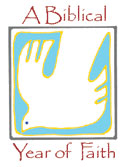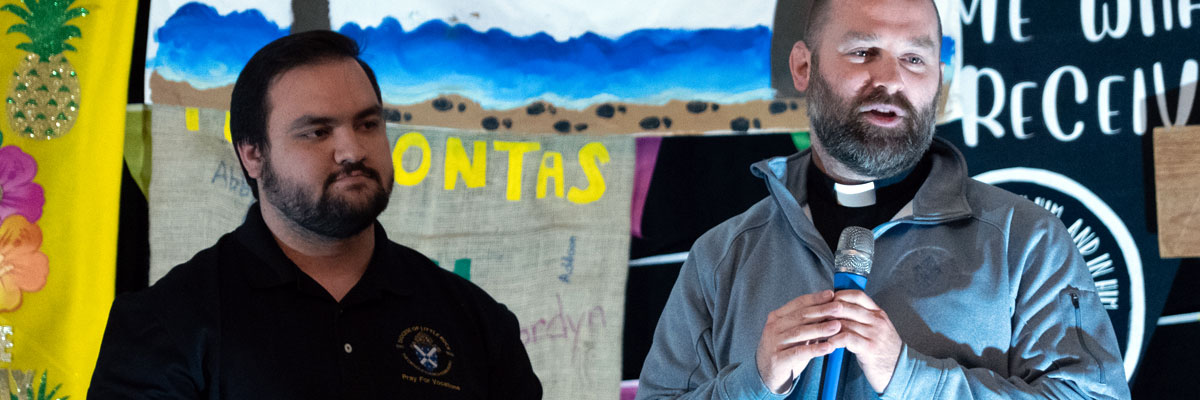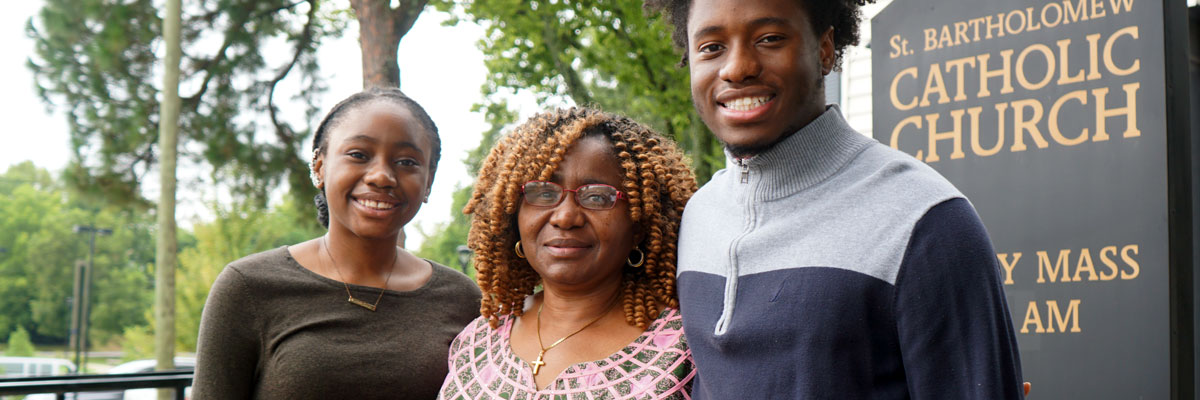Official Website of the
Catholic Diocese of Little Rock
Women first to witness the resurrection
Published: September 14, 2013
This is the 12th column in a 14-part series
By Clifford M. Yeary
Associate Director, Little Rock Scripture Study
Comparing all four Gospel accounts of the disciples' experiences at the empty tomb on that first Easter morning can be challenging. Each Gospel records the event a little differently. In no two of the Gospels do all the same disciples appear at the tomb and the order in which they appear also differs. Is there a young man (Mark), or two men (Luke), or an angel at the tomb (Matthew)? Or is there no man or angel at all, except for Jesus himself standing just outside the tomb (John)?
 Wanting all four of the Gospels to give the same account of, or at least to agree on, all the details surrounding the Easter morning events at the empty tomb might lead us in the wrong direction altogether. Instead of encountering each Gospel's witness to our faith in Jesus' resurrection, we might find ourselves arguing with doubt and demanding proof. This side of our own graves, the closest most of us will come to a proof of Jesus' resurrection is the joy the Holy Spirit spills into our hearts when we embrace the message, "He is risen."
Wanting all four of the Gospels to give the same account of, or at least to agree on, all the details surrounding the Easter morning events at the empty tomb might lead us in the wrong direction altogether. Instead of encountering each Gospel's witness to our faith in Jesus' resurrection, we might find ourselves arguing with doubt and demanding proof. This side of our own graves, the closest most of us will come to a proof of Jesus' resurrection is the joy the Holy Spirit spills into our hearts when we embrace the message, "He is risen."
There is, however, in each of the Gospel accounts of the resurrection a common thread. The first witnesses to the reality of the empty tomb were women (or just Mary of Magdala, in John's account). This, ironically, reveals a historical reality that the early Church and the Gospel writers themselves seem to have worried might cast doubt on their testimony that Jesus had truly risen from the dead.
Luke presents us with a number of women at the empty tomb. "The women were Mary Magdalene, Joanna and Mary the mother of James," as well as the unnamed "others who accompanied them" (24:10). Luke records the women's experience clearly enough: "But at daybreak on the first day of the week they took the spices they had prepared and went to the tomb. They found the stone rolled away from the tomb; but when they entered, they did not find the body of the Lord Jesus. While they were puzzling over this, behold, two men in dazzling garments appeared to them. They were terrified and bowed their faces to the ground. They said to them, 'Why do you seek the living one among the dead? He is not here, but he has been raised. Remember what he said to you while he was still in Galilee, that the Son of Man must be handed over to sinners and be crucified, and rise on the third day'" (24:1-7).
The difficulty the early Church had with this remembrance is simply that women were not considered credible witnesses. That this was a problem for the apostles is acknowledged by Luke. The women faithfully recount to Peter and the other Apostles what had been revealed to them at the empty tomb, "but their story seemed like nonsense and they did not believe them" (24:11).
While each Gospel faithfully recounts somewhat differing aspects of the story from apostolic and oral tradition, all four are unanimous in recording that the first witnesses were female. This has led some throughout history to discredit the resurrection accounts. As if a claim of a man rising from the dead isn't hard enough to believe in the first place, that it was a tale originally spread by women simply made it seem preposterous.
After nearly 2,000 years, however, the witness of these women is being seen as more and more historically reliable. The very fact that their witness was not deemed credible in their own time and place — even, at first, among the apostles — makes it far more likely that they were in fact the first witnesses. Anyone who thinks the early Church fabricated its accounts of the resurrection must ask themselves why the Gospels all insist on telling the story of the women who were the first witnesses. What was once "nonsense" is now a clear testimony to the resurrection with real historical credibility.
Today, the Church still struggles to give women their due voice as witnesses to our risen life in Christ. Pope Francis asks us to develop a deeper theology of women. We could do far worse than starting with Scripture and mining the historical, cultural and theological contexts of the empty tomb narratives. Perhaps we will discover good reason why God made his risen Son known first to women and only later to the Apostles.
Study Questions
- What are some differences between the accounts of the empty tomb found in the four Gospels?
- If you have a favorite Gospel account of the resurrection, which is it and why is it your favorite?
- Who are some women who have faithfully witnessed to you of the Good News of life in Christ?
- What are some of the ways we as a society and as a church fail to give due credit to the voices of women?
This article was originally published in Arkansas Catholic Sept. 14, 2013. Copyright Diocese of Little Rock. All rights reserved. This article may be copied or redistributed with acknowledgement and permission of the publisher.









